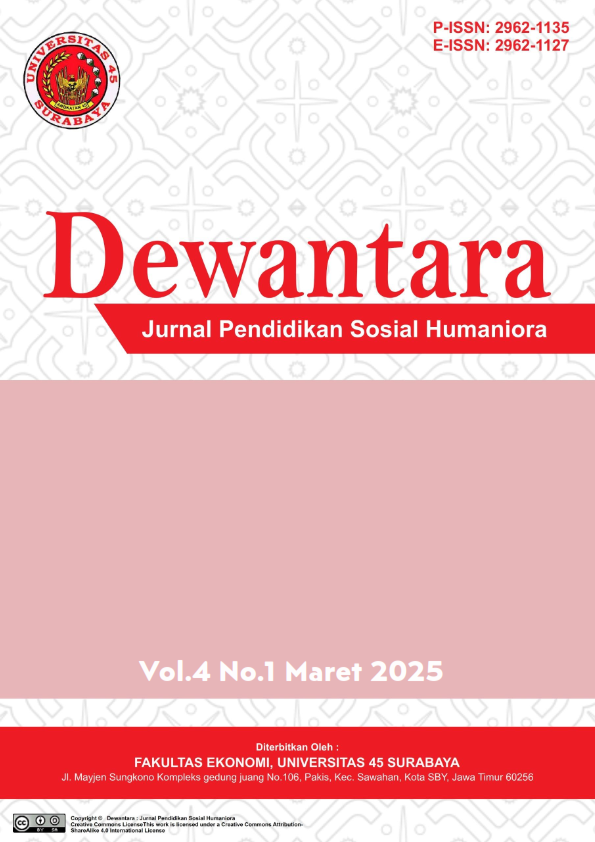Terapkan Safetyplay untuk Mencegah Bahaya pada Anak Usia Dini saat Bermain Playground
DOI:
https://doi.org/10.30640/dewantara.v4i1.3841Keywords:
Safetyplay, Children, PlaygroundAbstract
Playgrounds have an important role in supporting early childhood development (AUD) holistically, including physical, cognitive, social and emotional aspects. As a space for exploration and play, playgrounds are designed to stimulate children's gross and fine motor skills, creativity, problem solving and social skills. However, safety is the main factor that must be considered when designing a playground. The safety play concept is applied to minimize the risk of physical injury and psychological trauma to children while playing. Implementation of safety play includes the use of safe surface materials, play equipment according to safety standards, adult supervision, separation of areas based on age groups, and safety education for children. With a safe and functional design, playgrounds not only provide a sense of security for children but also support their optimal development. This research highlights the importance of playgrounds as a means of learning and developing AUD as well as examining the application of safety play to create an ideal playing environment.
References
Anderson, J. R., & Davis, M. (2020). Impact of playground design on child safety: A review of recent research. Journal of Pediatric Safety, 15(3), 210–225.
Brown, K., & Edwards, M. (2019). Child safety and playground design. New York: Health & Safety Press.
Centers for Disease Control and Prevention (CDC). (2022). Playground safety and injury prevention. Retrieved from https://www.cdc.gov/playgroundsafety
Frost, J. L., Wortham, S. C., & Reifel, R. S. (2012). Play and child development (4th ed.). Upper Saddle River, NJ: Pearson.
Johnson, L. (2021). Preventing playground injuries: A comprehensive guide. London: Safety First Publications.
Kementerian Kesehatan Republik Indonesia. (2021). Profil kesehatan Indonesia 2020. Kemenkes RI.
Kurniawan, A. (2018). Analisis keamanan taman bermain anak di Kota Bandung. Jurnal Arsitektur, 15(2), 101–110.
Lee, C. S., & Tanaka, M. (2019). Evaluating the effectiveness of safety standards in playground equipment. International Journal of Child Health and Safety, 12(2), 105–120.
National Program for Playground Safety (NPPS). (2024). Tips for safe playground design. Retrieved from https://www.playgroundsafety.org
Robinson, P. J., & Walker, T. (2022). The role of supervision in preventing playground injuries. Journal of School Health, 92(4), 340–348.
Sandseter, E. B. H. (2009). Characteristics of risky play. Journal of Adventure Education & Outdoor Learning, 9(1), 3–21. https://doi.org/10.1080/14729670802702762
Smith, A. R. (2018). Safe playgrounds for young children. Boston: Early Childhood Press.
Suherman, M. (2019). Pengaruh pengawasan orang tua terhadap keselamatan anak di taman bermain. Jurnal Psikologi, 24(1), 45–56.
Downloads
Published
How to Cite
Issue
Section
License
Copyright (c) 2025 Dewantara : Jurnal Pendidikan Sosial Humaniora

This work is licensed under a Creative Commons Attribution-ShareAlike 4.0 International License.








